Qualitative Data Analysis with NVivo
Student Resources
Windows
On this part of the website, you have free access to up to date click-by-click instructions for NVivo on Windows. Simply click on the headings below to reveal the instructions.
Use the index of click-by-click instructions as a companion guide to help you find the instructions you need, or browse through the instructions below that accompany this chapter.
9.a. Importing, viewing, annotating, and linking a picture, add Annotations or Links to the image or log, Coding a picture or log and viewing a coded picture and log in a Node
Importing, viewing, annotating, and linking a picture
Import and examine Properties of a picture
- Ribbon: Import > Files > locate the File(s) > Open > Import.
- List View: Right-click on the File > Picture Properties > Picture tab to access metadata such as the date the photo was taken, aperture, and exposure time.
View and adjust your picture
- List View: Double-click on the File.
- Click to Edit.
- Ribbon: > Edit.
- You can now adjust the Brightness & Contrast.
- Rotate the image 90 degrees Right or Left, for instance.
- The area allocated to the image versus the log (described next) can be adjusted with a double-headed arrow on the vertical line separating these areas.
- On the bottom right-hand side of the NVivo window you will also see a slide bar that allows you to zoom in or out on the image.
Writing about a picture
If you would like to write notes about some or all of the image, this can be accomplished with a log, an Annotation, or a Memo Link.
Enter a log
- Detail View: Right-click in the picture > make sure the Edit icon is illuminated. If not, select it to turn it on.
- Click in the picture and drag your cursor diagonally to create a Region and release your Click (Figure 9.3).
- Inside the Region > Right-click > Insert Row.
- The log locates the region (using pixel coordinates) and you can add text in the Content field (Figure 9.3).
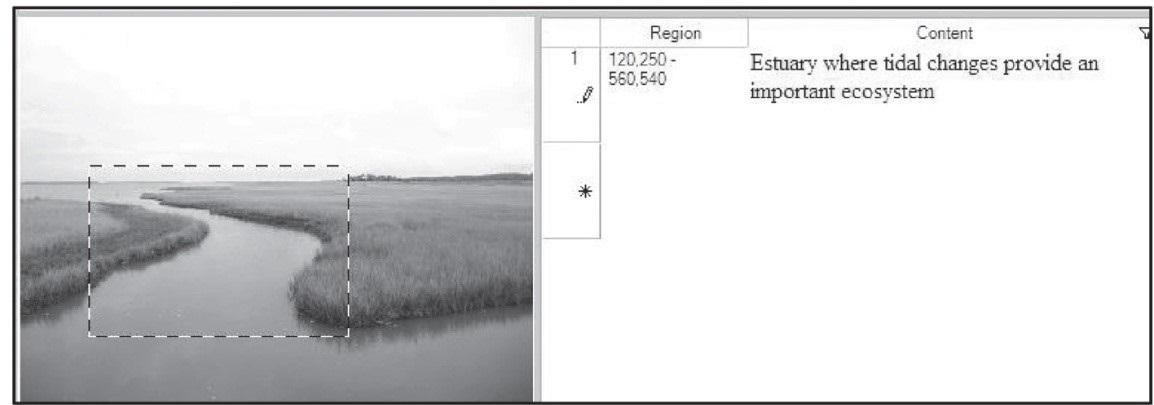
Figure 9.3 Picture with a newly inserted log entry
- Select the number next to any row to illuminate the associated portion of the picture.
Add Annotations or Links to the image or log
To add a Memo Link, Annotation, or See Also Link to the picture or log, follow the instructions in Chapter 1 and treat the selection just as you would text from an interview transcript. In brief:
Memo Link
- Detail View: Right-click anywhere in the picture or log > Links > Memo Link > Link to New (or Existing) Memo.
Annotation
- Detail View: Select a portion of the picture or log > Right-click > New Annotation.
See Also Link to an entire item
- Detail View: Select a portion of the picture or log > Right-click > Links > See Also Link > New See Also Link.
See Also Link to specific content
- Detail View: Select a portion of the picture or log > Right-click > Copy.
- Go to another File, such as an interview, article or another picture and Highlight the passage that is related to this part of the picture.
- Right-click > Paste As See Also Link.
- Alternatively, Select content from another File and Copy it, then return to Select a place in the picture or log > Right-click and Paste As See Also Link. (See Chapter 1 for additional information about See Also Links.)
Coding a picture or log
You can code a picture and its log in much the same way as you code a transcript (drag and drop, right-click, or select recently used Nodes from the Quick Coder). See Chapters 3 and 4 for details about coding text and working with Nodes. The difference from coding other text is in the way parts of the picture or log are selected for coding, and how they appear in a Node.
Coding picture Regions
- Detail View: Click in the picture and drag your cursor diagonally to create a Region and release your Click (Figure 9.3).
- Drag this Region of the picture to any Node, or Right-click to Code.
Coding the log
- Code part of the text in a log row (for images, audio, or video) as you would for any other text.
- To code an entire log row (instead of just a portion) > Select the number to the left of the row > drag this number to the Node (or Right-click and code).
Viewing a coded picture and log in a Node
Viewing a coded picture
- Navigation View: Codes > Nodes.
- List View: Double-click on a Node that is coded with picture data.
- See the pixel coordinates of the image in the Reference tab (the default Node display).
- To see the picture (Figure 9.4), on the right margin of the Node display, switch to the Picture tab.
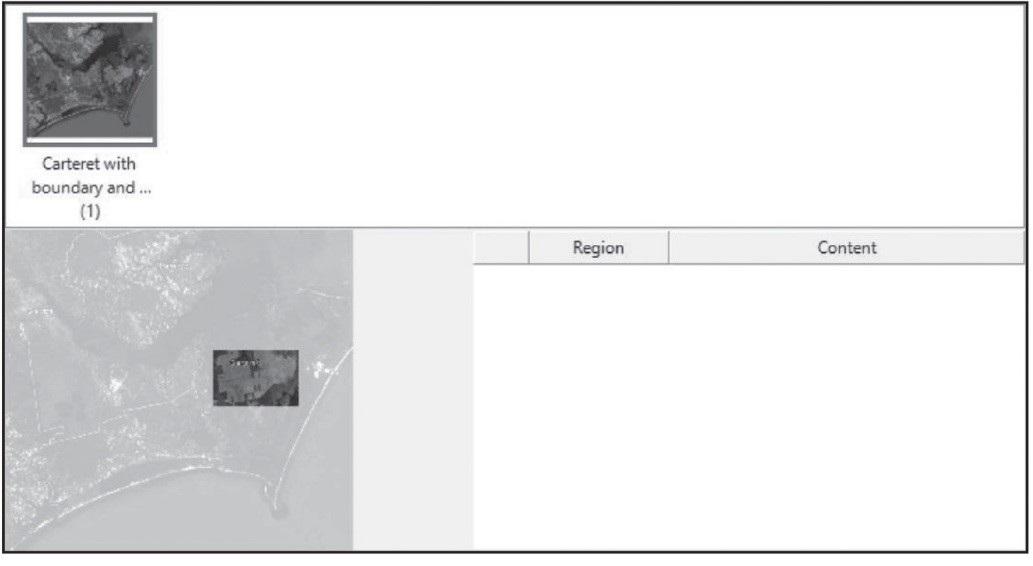
Figure 9.4 The picture content of a Node open in Detail View
Viewing a coded log
- Coded text from a log entry will appear in your Nodes along with other text References.
9.b. Importing audio or video Files
Import audio and video Files in the same way as you import pictures or text data. Then check to see whether the File is embedded or stored elsewhere.
- List View: Right-click on the File you just imported > Video Properties.
- Select the Video tab. If your media file is under 20MB, you will see it was imported as an embedded file. If it is 20MB or larger, it was imported as a not-embedded file.
- At any time, you may alter the status of Files up to 40MB as embedded or not-embedded by changing the Video Properties of the File.
You can change the options for your project to modify the size of files that will be embedded (up to 40MB) when you import them (File: Options > Audio/Video). If you move a not-embedded File and break the link, you will receive an error message when opening it from inside NVivo. Fear not, however, because as soon as you re-establish the link by updating the file location, all of your coding and Links will jump back into position.
9.c. Playing media
- List View: Double-click to open your video.
- Ribbon: Video > Play/Pause.
- Detail View: Watch the playhead move across the timeline (Figure 9.6).
- Select > Stop.
- You can place your cursor on the playhead and drag it to any point along the timeline to a different segment > Play/Pause.

Figure 9.6 The playhead moving across the timeline of an audio or video File in Windows (top) and Mac (bottom)
9.d. Transcribing in NVivo
- In the Video Ribbon, Playback group, you will see Play Mode with three different settings (Figure 9.5). You are currently in Normal play mode with a green triangle illuminated.
- To transcribe, you will need to Select the Play Mode on the right that is probably greyed out (circled in figure 9.5) To access and use it:
- Detail View: If it is available, Select the Click to edit bar just above the timeline of your audio or video.
- From the Play Mode options, Select the Transcribe icon (circled in Figure 9.5).
- Adjust the speed and volume of the playback to suit your needs.
- Move your playhead to the location where you want to begin transcribing and click Play/Pause (or use your keystrokes or foot pedal).
- A transcript row appears to the right of the media where you can begin typing next to the Timespan (Figure 9.7).
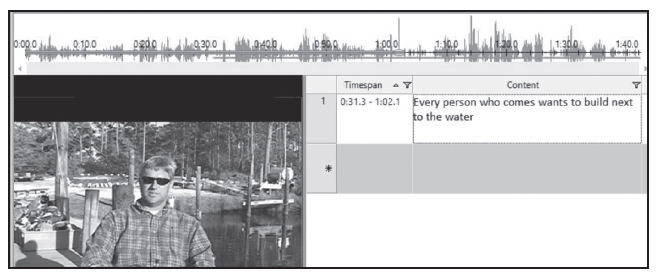
Figure 9.7 Entering a new transcript row (Windows)
- Click Pause (or use your keystrokes or foot pedals) to remain in the same row while you correct, retype or catch up.
- Click Play to start again.
- Click Stop and then Play to create a new row.
9.e. Using custom fields and Auto Coding in a media transcript
Add a custom field
- File: Project Properties > Audio/Video tab.
- Custom Transcript Fields > Select the Audio or Video tab and use the New button to add new fields.
- Enter a name, such as Speaker > OK. Any fields that you add will be applied to all media of that type within this project.
- Detail View: See the new field in the video or audio transcript.
Auto Code speakers to create Cases
- List View: Select your audio or video File > Right-click > Auto Code.
- NVivo Plus users: Select Use the style or Structure > Next.
- Select the Available Transcript Field containing your Case names (e.g., Speakers) and use the arrow to move right, under Selected Transcript Fields.
- Identify the Location and Name for where the Cases are to go > Finish.
- You can now classify your Cases and add Attribute Values to them, just as you would any other Case. (See Chapter 5 for more details.)
9.f. Coding a media file and viewing coded media
Coding the transcript
- Detail View: To code the transcript, use your right-click or drag-and-drop options as you would any text (Chapter 3). As with pictures, Select a row number to code the whole transcript row.
Code the media timeline as media clips
You have two options for selecting portions of the media timeline for coding:
- Detail View: If you know the time range you want to select (because it has already been transcribed or because you just played it), click and hold on the timeline where you would like the episode to begin, and drag as far as you need.
- Your cursor is marking off a blue box around the selected range.
- Release and your box is complete.
- Media Ribbon: Click to Start Selection or Finish Selection as the media plays. Again, a region in the timeline will be marked off with a blue box.
Now that you created a blue box to identify the range, you are ready to code:
- Detail View: Place your cursor inside the blue box and code as you would normally (drag and drop, right-click, etc.)
Viewing coded media
- Navigation View: Codes > Nodes.
- List View: Double-click on a Node that contains media data.
- Detail View: You are in Reference view and so you will see only the time range identified (alongside any text you coded at the Node). To see the range of media and play it:
- Go the right side of the Detail View and choose the appropriate tab (Audio or Video).
- Media Ribbon: > Play. The episodes or clips coded at that Node will play consecutively.
9.g. Run a Group Query
For example, in the Environmental Change Project you could find all the audio and video Files that have been coded to Real estate development and Natural environment. After you find the Files, you can instantly turn them into a Set of People who talk about Real estate development and Natural environment. You can use this Set in a subsequent Query pertaining to only these people.
- Ribbon: Explore > Group.
- Look for: Items Coding.
- Scope: Change Files and Externals to Selected Items > Select > tick the boxes next to your audio and video interview Files (e.g., Betty and Paul, Helen, Ken) > OK.
- Range: Change to Selected Items Select > tick the boxes next to the Nodes (e.g., Real estate development and Natural environment).
- Run.
- Right-click on the File names to Create As > Create As Set > Name the Set > OK (Figure 9.10).
- The Set will be stored in Navigation View: Search > Sets.
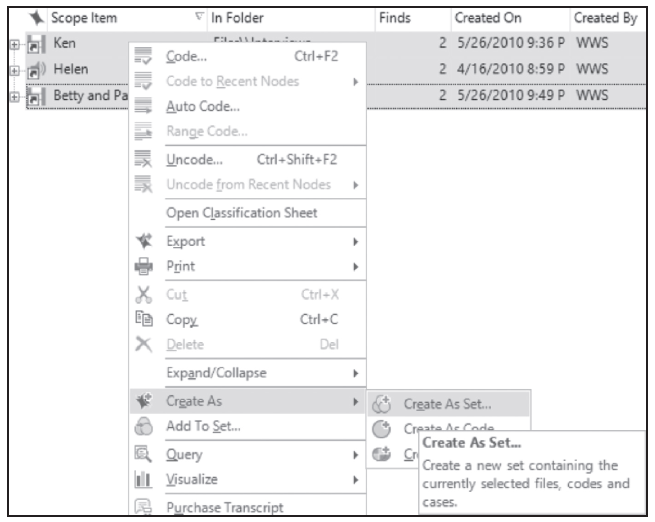
Figure 9.10 Turning the results of a Group Query into a Set
- Select the Connection Map tab on the right to visualize the connections (Figure 9.11).
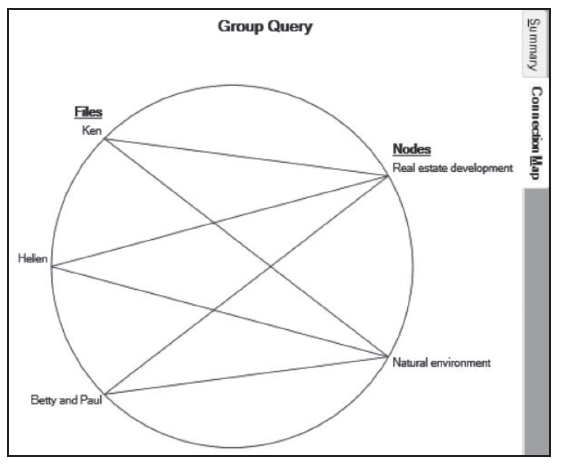
Figure 9.11 A Connection Map of the Files coded to Natural environment and Real estate development
If you want to save this Query to run it again later:
- Ribbon: Explore > Last Run Query > Tick Add to Project > Name it > OK.
9.h. Export from the Detail View and Export from the List View
Export from the Detail View
- Navigation View: Codes > Nodes (or Data > Files).
- List View: Double-click on a Node (or File).
- Detail View: Right-click > Export > Export Node (or Export File).
- Entire Content: The contents of the File or Node will be saved as an html file, with tabs for Summary and Reference views and also for each type of content (e.g., text, video, pdf, picture). Coded passages from pdf sources will also show as highlighted regions within the context of the relevant page.
- Reference view: The contents of the File or Node will export as a Word file (defaulting to docx, but with other options) showing coded text and pdf passages. For coded image, audio, or video Files, you will see only the pixel coordinates, time stamps, or the coded log or transcript rows, and not the image or the video contents. Coded passages from pdf Files will also show as highlighted regions within the context of the relevant page.
Export from the List View
- Navigation View: Codes > Nodes (or Data: Files).
- List View: Right-click on a Node (or File) > Export > Export (Node or File).
